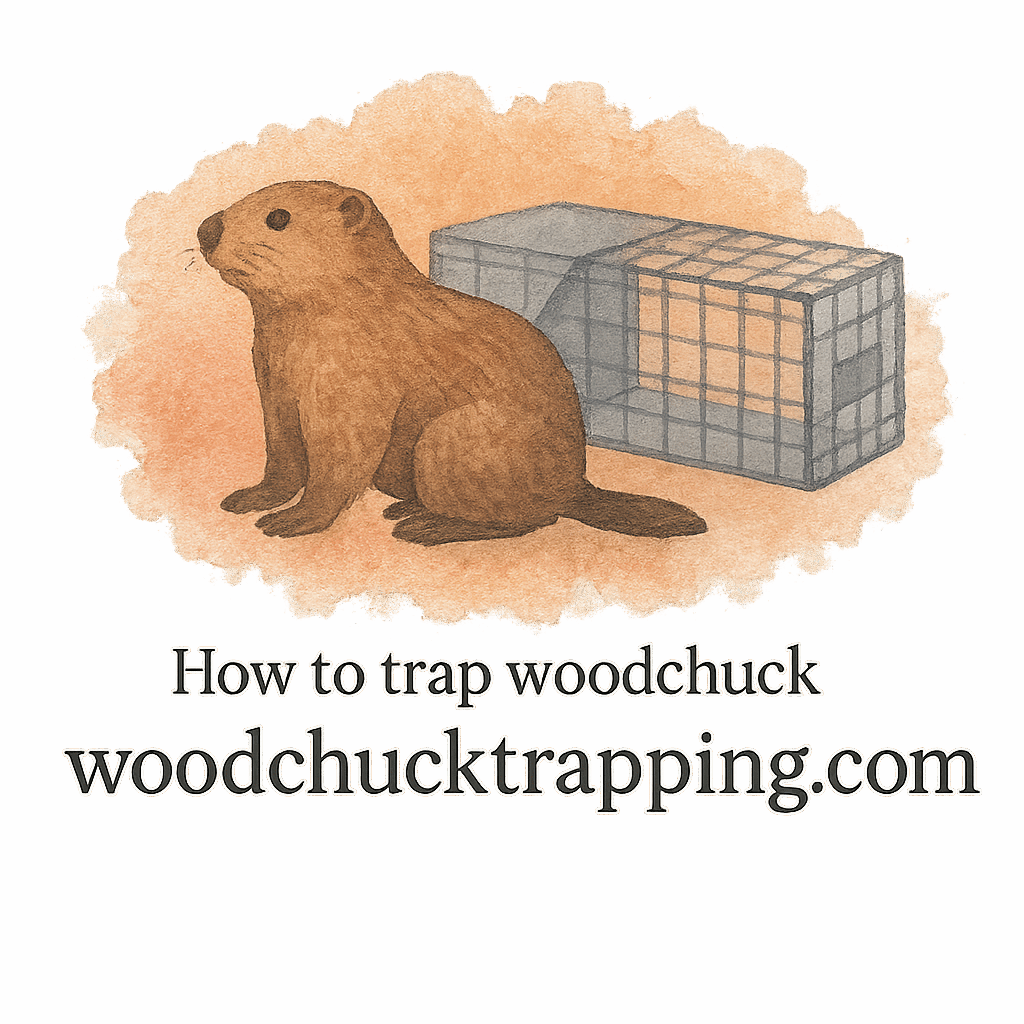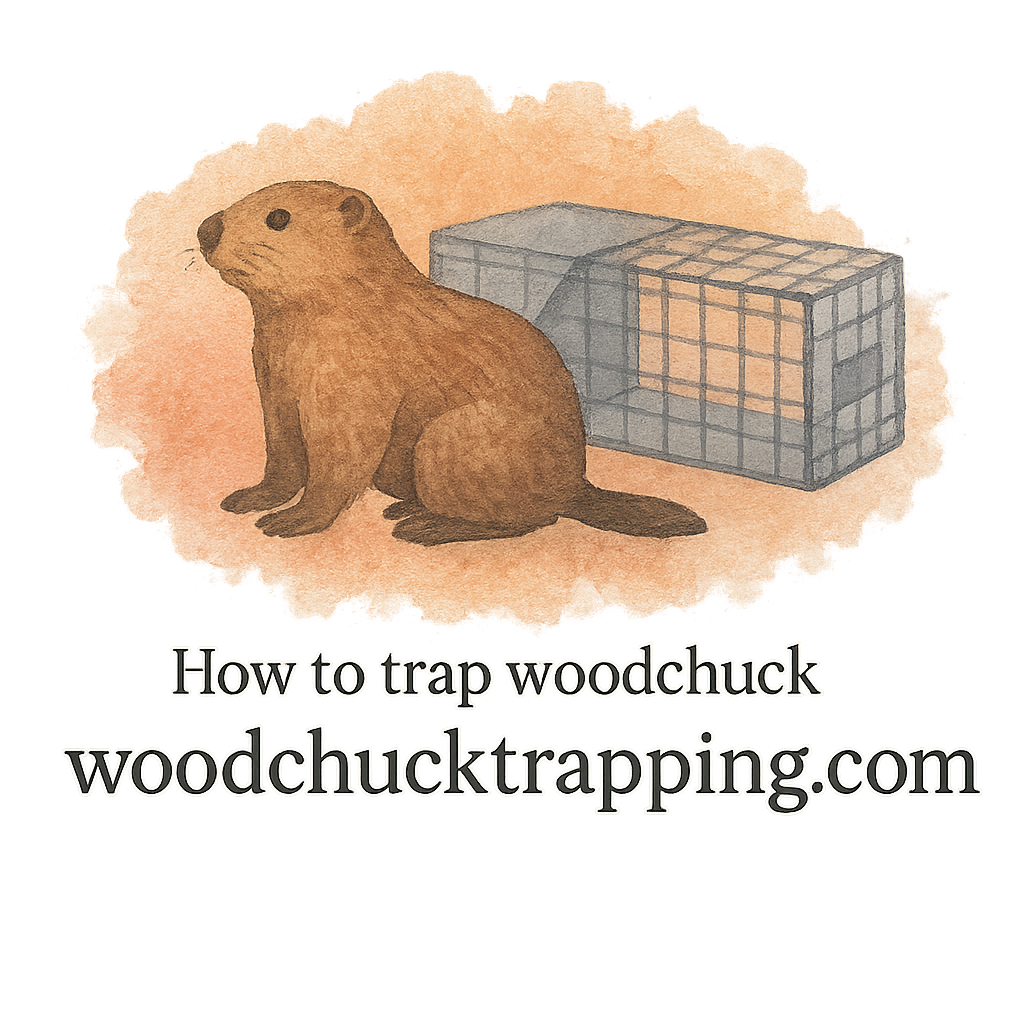Introduction: Why Humane Woodchuck Trapping Matters
If you’ve ever noticed mysterious holes in your yard, plants disappearing, or piles of dirt near your foundation, chances are you’re dealing with a woodchuck problem. These critters, also called groundhogs, are notorious diggers. While they may look cute, they can wreak havoc on your garden, yard, and even your property’s structural integrity. That’s where humane woodchuck trapping techniques come into play. Instead of harmful or dangerous methods, you can learn effective, safe, and compassionate ways to handle these burrowing animals.
Understanding Woodchucks
What Are Woodchucks?
Woodchucks (or groundhogs) are medium-sized rodents known for their strong digging skills. They create extensive burrow systems that can damage lawns, weaken structures, and disturb gardens. Despite being pests, they play an important role in the ecosystem—so humane control methods are crucial.
Common Signs of Woodchuck Infestation
Before you trap, you need to confirm you’re dealing with woodchucks. Look for:
- Large burrow openings near sheds or decks (see signs).
- Chewed plants or garden crops.
- Tracks and droppings in soil.
If these sound familiar, you probably have a woodchuck infestation on your hands.
Why Homeowners Struggle With Woodchucks
Woodchucks are persistent. Their burrows can stretch for several feet, making them hard to locate. Plus, they’re cautious around human scents, making trapping tricky without the right gear and strategy.
Preparing for Humane Trapping
Research Local Laws and Safety Guidelines
Before setting any traps, check your local regulations. Some states restrict relocation distances, and safety rules are in place for both humans and animals. You can learn more about laws and safety to ensure compliance.
Choosing the Right Trap Gear and Equipment
Using the right trap makes all the difference. Consider trap gear, compact traps, and durable equipment designed for medium-sized animals like woodchucks. Check equipment reviews to make an informed choice.
Safety Precautions Before You Start
Always wear gloves when handling traps. This reduces your risk of bites and prevents your scent from transferring to the trap. Safety should always come first—for both you and the animal.
10 Humane Woodchuck Trapping Techniques
1. Identifying Active Burrows
Locate the most frequently used burrows. Active burrows usually have fresh dirt, tracks, or gnawed vegetation nearby. Setting traps near these entrances boosts your success. (burrows guide)
2. Using the Right Humane Trap Size
A trap that’s too small won’t hold a woodchuck safely, while a trap that’s too large may stress the animal. Look for medium-sized traps that offer enough room for humane capture.
3. Effective Placement of Traps
Traps should be placed directly at burrow entrances or along travel paths. For smaller spaces, opt for minimal space traps.

4. Baiting and Luring Strategies
Fresh vegetables like lettuce, apples, and carrots work well. For more advanced methods, explore baiting and luring guides that detail scent-bait combinations and lure placement.
5. Masking Human Scent with Gloves and Trap Scents
Woodchucks have sharp noses. Use trap scent products or natural dirt to mask human odors. Always handle traps with gloves.
6. Compact Traps for Minimal Space Yards
In tight yards, use compact traps. These fit easily in smaller spaces without sacrificing effectiveness.
7. Using Natural Scents and Attractants
Woodchucks respond well to scent bait and natural attractants. Think of it like offering them a gourmet meal they can’t resist.
8. Monitoring Traps Frequently
Check traps often—ideally every few hours. Leaving a trapped animal unattended can cause stress, dehydration, or injury.
9. Handling a Trapped Animal Humanely
When handling, stay calm and wear protective gear. Learn safe animal handling techniques to reduce risk for you and the woodchuck.
10. Releasing and Relocating Responsibly
Choose a legal, safe release site away from homes. Always follow local trapping laws for relocation distance.
Preventing Future Woodchuck Infestations
Yard Damage Prevention Tips
Preventing yard damage is often easier than trapping repeatedly. Install fencing, seal burrow entrances, and maintain clean gardens.
Long-Term Deterrents for Small Yards
If you have a small yard, consider deterrents like motion-activated sprinklers or planting woodchuck-resistant crops.
Humane Exclusion Techniques
Exclusion is key. Blocking burrows, installing barriers, and using humane repellents can stop woodchucks from coming back.
Common Mistakes Homeowners Make
Using the Wrong Equipment
Not all traps are created equal. Cheap or poorly sized traps may harm the animal—or fail completely. Invest in the right trapping essentials.
Ignoring Safety Measures
Skipping safety steps like gloves and proper handling puts both you and the woodchuck at risk.
Leaving Traps Unchecked
Unmonitored traps can cause unnecessary suffering. Responsible trappers always check traps often.
Conclusion
Woodchucks may be persistent, but with the right humane techniques, you can manage them effectively. By following these 10 humane woodchuck trapping techniques, you’ll not only protect your yard but also treat these animals with compassion. Whether you’re dealing with one woodchuck or an entire infestation, the key is preparation, patience, and the right trapping techniques.
FAQs
- What is the most humane way to trap a woodchuck?
Using a medium-sized live trap with proper bait and frequent checks is the most humane method. - What bait works best for woodchuck traps?
Fresh vegetables like carrots, apples, and lettuce, along with specialized lures. - Can I relocate a trapped woodchuck anywhere?
No, always check laws and safety to avoid fines and ensure legal relocation. - How do I prevent woodchucks from returning?
Use fencing, block burrows, and apply long-term deterrents for yard damage prevention. - Are compact traps effective in small spaces?
Yes, compact traps are ideal for minimal space yards. - What safety precautions should I take while trapping?
Always wear gloves, use proper tools, and follow handling guidelines. - What are the signs that a woodchuck has infested my yard?
Look for burrow holes, chewed plants, and dirt piles—see signs of infestation.


